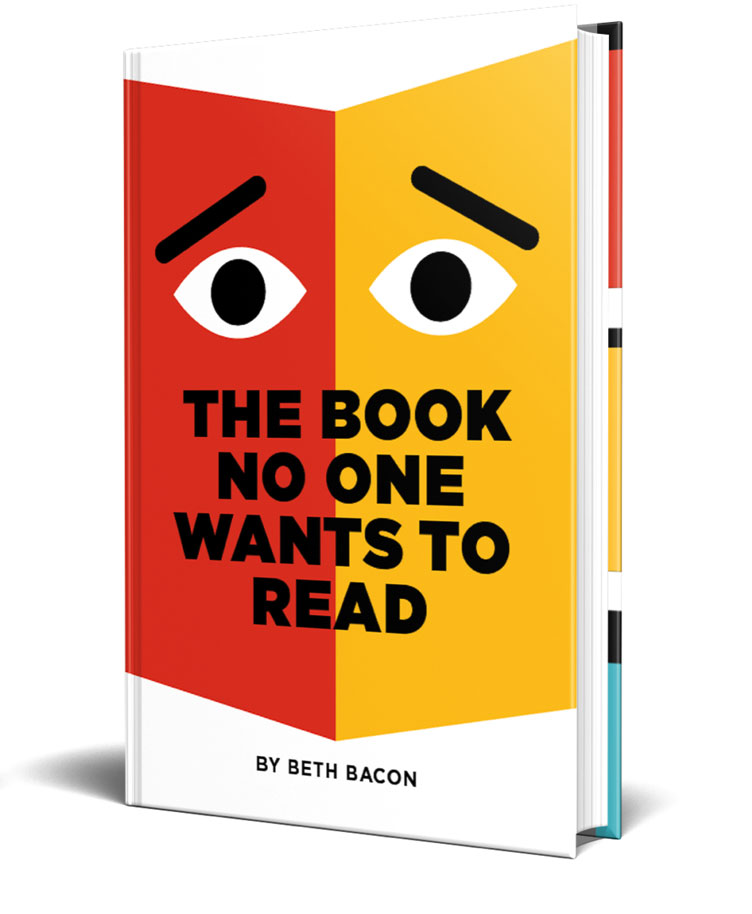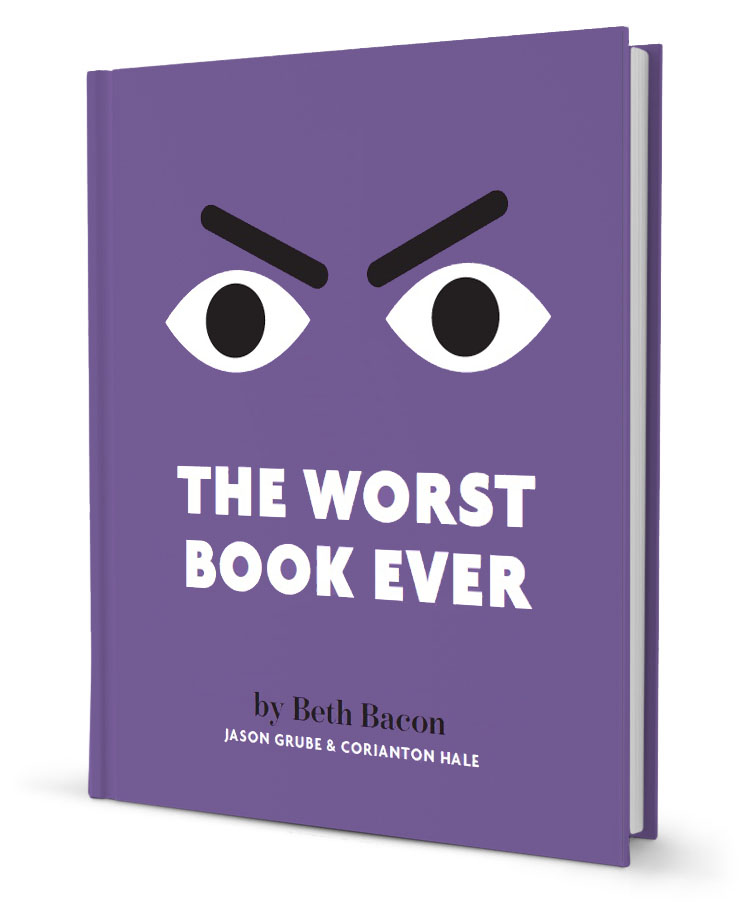When HarperCollins picked up my books I Hate Reading and The Book No One Wants To Read, they took the original words and page design and transferred them to a different form factor. The smaller size made the books a better fit in elementary school book bins.
A call from my editor
As they were working through the new layout, for The Book No One Wants To Read, I got a call from my editor. She said their standard page set allowed us to add one extra page at the end. She asked me if I wanted to use that page, somehow.
Fill in an extra page at the end of an already completed book? It seemed like an unusual opportunity. But an opportunity nonetheless. So I thought about it. At minimum it would be a creative exercise. Or better yet: a creative challenge. What a great way to spend time—thinking creatively.
My creative process
The first thing I did was think about the book as a whole. What was I trying to do with this book and why did I end it the way I did?
The Book No One Wants To Read uses meta-storytelling to interact with the reader. The narrator is the book itself, who talks directly with the reader. The book invites (challenges? begs? pleads? tricks?) … anyway, whatever the verb is, the book gets the reader to take action while they read. Some of those actions are games (they play “Rock, Paper, Scissors”), puzzles (there is a maze in the book), jokes, and optical illusions.
My goal for this book was to make the experience of reading it fun for kids who are self-proclaimed non-readers. When I worked at the library at Miramar Ranch Elementary School, I noticed that a group of students from every class always rushed over to the shelves where we stored the game and puzzle books. The rule was, they had to check out one book a week. Books full of games and puzzles were books, right? Choosing one of those allowed them to follow the rule without really following the rule.
But reading is reading, right? I had no problem with kids reading the instructions to a puzzle or the punch line to a riddle. But I also knew that a huge part of the joy of reading comes when you engage in a narrative you care about and take on the hopes and dreams of an appealing, yet flawed, character.
I wondered if I could write a book that was full of games and puzzles and jokes and optical illusions … and also had a page-turning plot and endearing character. The answer is: yes I could. And I did.
An endearing character
What makes a character endearing and real? The character has to have a desire. This book’s desire is very clear: it wants to make a friend. Problem is, it’s never had a friend before and it makes a lot of mistakes. It’s a little selfish. It’s not exactly bubbling over with fairness. But it does show its emotions. And even though it’s not super honest when it plays games, it’s really honest about sharing how much it likes having this reader as a friend. The book is not perfect. But it’s humble and clearly has a big heart.
The old ending
So that gets me to the creative challenge of adding a page to the book. At the conclusion of this story, the book asks the reader to give it a high five. Literally. The reader is told to slap the book on a giant X. Then the book says, “Ouch.”
And that’s it. The book is over.
The book, yet again, acts sort of awkwardly, if not irresponsibly. It asks the reader to “smack” it without thinking about the consequences. It’s right in line with the other goofball things this character has been doing. But this character has also been doing a lot of growing, so the reader knows it will be okay in the long run.
One of the traits of this character is that it is always sort of joking around. Earlier it asks to shake hands, but then it says it doesn’t have hands. It also plays a staring contest, and declares itself the winner because it doesn’t have eyelids. So asking the reader to “smack” it is right in line with behaviors that have already been modeled. This book doesn’t take itself too seriously. It kids around a lot. So the smacking is kind of funny, in a lighthearted high-five kind of way.
The more I thought about it, the more I realized that’s sort of an unsatisfactory ending. The book ends up hurting. It was trying to be funny, trying to be a pal, asking for a high five. The book gets slapped. By the reader, no less. So the main character — and the reader — both end up a little uncomfortable: the book physically, the reader emotionally (though the reader’s hand my hurt, too, depending on how hard they slap the book). Though pattern of humor has been established, and everyone knows it’s all in fun… still… it is a little bit harsh.
The new ending
In my rethinking, I expanded on the book’s trait of honesty and humility. This is what allows the reader to care about the book. It is truly trying to change so it can make some friends. It’s just not very good at making friends. What if, I wondered… What if the book uses this extra last page to be extra honest. To be humble. To tell the reader it actually had said that the high-five hurt—but it really didn’t. The book, once again, was just kidding around.
So I added the four simple words: “Just kidding! (Didn’t hurt.)” and it made such a delightful difference.
Now the reader doesn’t feel bad about smacking the book. And the book has shown that it has started to consider other people’s experiences. Which is a nice trait to have in a friend. 






0 Comments